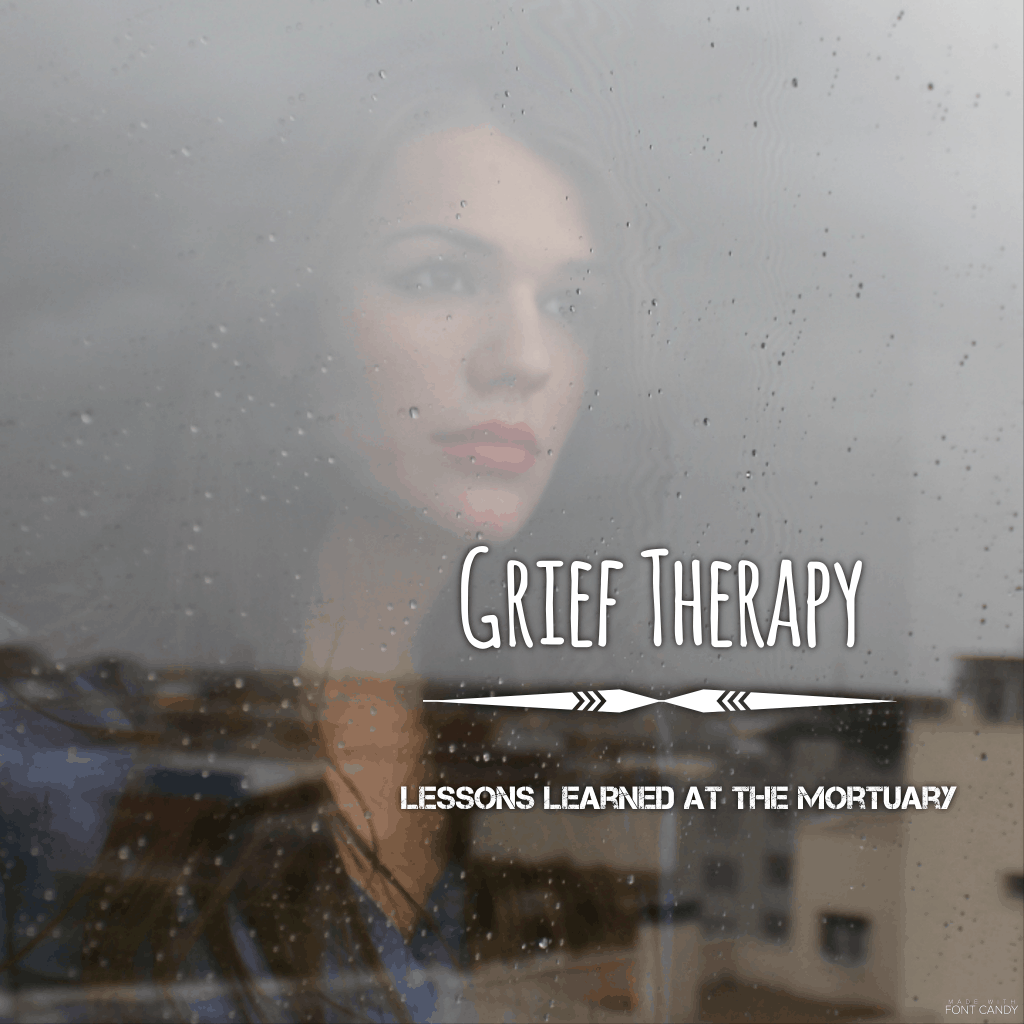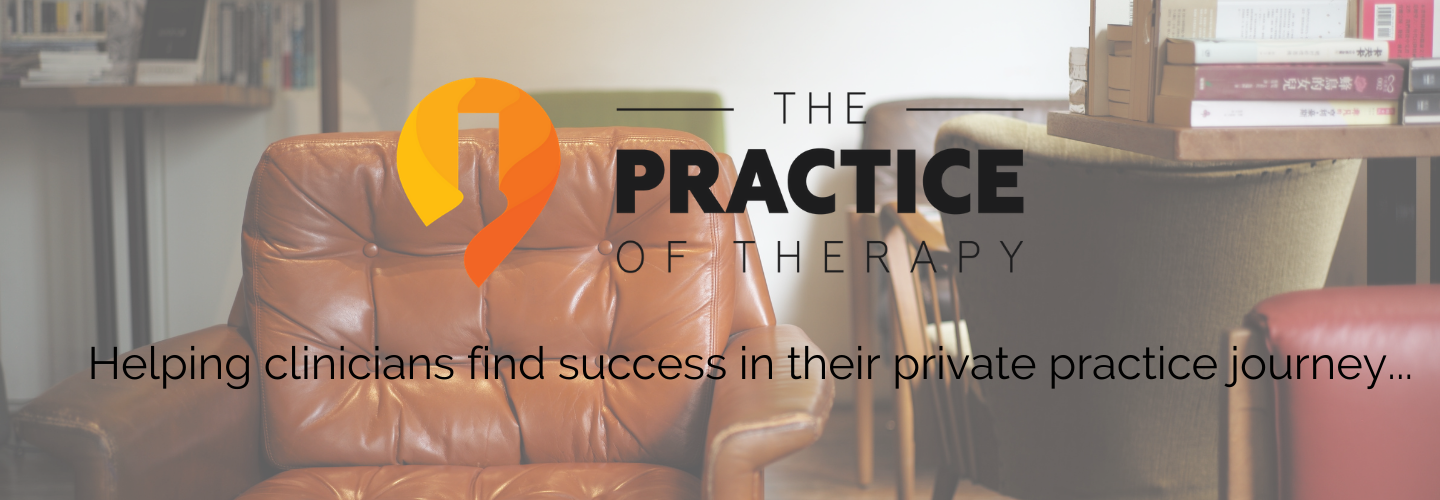Grief Therapy- Lessons Learned from the Mortuary
 As therapists, most of us have hopefully received some rudimentary knowledge about grief and bereavement therapy in our training. Hopefully you know about Elisabeth Kübler-Ross’ work and her classic book, On Death and Dying. She outlined the 5 stages of grief that we have all come to know well: denial, anger, bargaining, depression and acceptance. That is all great stuff and things we need to know. But what I have learned is that having that knowledge about the “stages” grief really isn’t all that helpful, in and of itself. When a client that is totally overwhelmed by the sorrow, they feel pretty helpless. In fact, it is a pretty helpless place to be for the therapists as well! You can’t just say some “magic therapeutic words” to take the pain away.
As therapists, most of us have hopefully received some rudimentary knowledge about grief and bereavement therapy in our training. Hopefully you know about Elisabeth Kübler-Ross’ work and her classic book, On Death and Dying. She outlined the 5 stages of grief that we have all come to know well: denial, anger, bargaining, depression and acceptance. That is all great stuff and things we need to know. But what I have learned is that having that knowledge about the “stages” grief really isn’t all that helpful, in and of itself. When a client that is totally overwhelmed by the sorrow, they feel pretty helpless. In fact, it is a pretty helpless place to be for the therapists as well! You can’t just say some “magic therapeutic words” to take the pain away.
Before becoming a therapist, I spent almost 18 years as a funeral director and embalmer before I changed careers. It is kind of an unusual career change. But then again, not really all that different. After all, both professions are in the business of helping people through a crisis. Despite what you might think about the funeral industry itself, there are some really wonderful and caring people that I learned a great deal from over the years.
I have been in practice now as a therapist for 15 years now. And what I learned as a funeral director has helped me immensely as a therapist. I experienced and dealt with grief on a daily basis when I was working as a funeral director. It taught me firsthand how effectively provide grief therapy and work with people during the most difficult time that anyone can face; the loss of a loved one.
The truth of the matter is that there are very few theories or modalities of grief therapy. Certainly there is evidence for cognitive behavioral approaches being helpful for people when grieving. William Worden’s book, Grief Counseling and Grief Therapy along with Robert Neimeyer’s, Techniques of Grief Therapy are both two I would recommend in learning some basics and techniques of grief therapy and theory. And certainly, all we have learned about treating trauma and PTSD is a helpful knowledge base that for helping people that are grieving.
When someone experiences the death of someone close, needless to say there is a deep sense of loss. With that deep sense of loss, there is very little anyone can say or do to take the pain away. In fact, it is impossible to take the pain of grief away with words. As therapists we do have the opportunity do some emotional “first aid” to help the process of healing begin. As it is with a physical wound, the emotional wound of grief has to heal from within. We can tend to the wound and provide a semblance of comfort, but the “work” of grief has be done by the individual in their own way in their own time. Providing support and being therapeutically present during this painful time goes a long way in helping people move through their grief. So as therapist, what can we do to be of most help during these painful times with our clients?
Here are some things to keep in mind when working with clients that are struggling with grief issues:
- Provide support and empathy– When it comes to working with grief, being able to turn on the counseling basics is always a good place to start. Carl Rogers had it right when it comes to empathic listening and unconditional positive regard; especially around grief issues. A lot of times all that a person really need is just a therapeutic presence and to know that the person on the listening end truly cares and is concerned. They know, and you know, that there is no way for your to “fix it”. You can’t bring the person back. You also are not going to be able to take the pain away. Grief and bereavement are just painful.
- Be aware of your own grief – When working with people that are grieving and they are telling their story, it is only natural and expected, for your own grief issues to bubble-up. As therapists we tend to be naturally attune to people’s emotions and pain. If you tear-up or find yourself feeling some of your own grief, just go with it! I believe it was Dr. Earl Grollman
, another author I would recommend, said, “Grief shared = grief diminished”. - Understand that grief is an attachment issue– The whole reason that we as human beings experience grief is because of our attachments. We are “hard-wired” to attach. We need that attachment for our emotional survival. When we lose a loved-one that attachment is severed and we feel abandoned and lost. Not unlike a toddler lost from their parent, panic ensues. Providing reassurance that they are going to be okay is helpful. They are experiencing pain, but they are okay and not really alone. The detaching hurts.
- Grief is a process– William Worden describes what he calls the “Four Tasks of Mourning”. These are: 1.) accepting the loss, 2.) experiencing the pain of grief, 3.) adjusting to the environment without the person and 4.) emotional relocation or reinvesting emotional energy into something or others besides the loss. It is helpful to remind those that are mourning that it is a process and is painful. It is also helpful to remind those that are grieving that the “tasks of mourning” have no recipe and to be patient with themselves and the process. Grief is something you get through not over.
- Allow and encourage people to “tell the story”– One of the first things I do in a session with someone that is coming to me for grief therapy is for them to simply tell me what happened. (In some cases, such as with extreme trauma, we have to work up to that) But telling the story of what happened is something I revisit several times during the course of therapy. My thoughts on that are that when people are traumatized or the detachment occurs, “the story” controls them. By telling the story again and again, it begins to take on new a meaning for them. They eventually reach the place emotionally that story no longer controls them, but they control the story. (A little narrative therapy there!)
- Encourage rituals and memorials– one of the clichés of the funeral business is, “funerals are for the living”. This is very true. We have the need to remember and create meaning out of the tragic. Think of 9/11 and the need we had to create memorials and say people’s names. It helps with the healing.
The thing to remember is that in order for people reach that forth task of mourning they need to have a sense of hope. One of the best ways I have heard grief described is like standing in the ocean with 100 foot waves crashing over you. They are unpredictable and seemingly relentless. But over time, the waves shrink in size and they come in more predictable patterns. Hope comes when a person realizes they are able to not only going to survive the waves, but they able to stand in the ocean and not always get knocked down. As therapists, our job is simply stand in the ocean with them. We can only point the way to calmer waters. But the client has to swim there on their own.
 By L. Gordon Brewer, Jr., MEd. LMFT – Gordon is the President and Founder of Kingsport Counseling Associates, PLLC. He is also a consultant and business mentor at The Practice of Therapy.
By L. Gordon Brewer, Jr., MEd. LMFT – Gordon is the President and Founder of Kingsport Counseling Associates, PLLC. He is also a consultant and business mentor at The Practice of Therapy.





